Historic Masonry Restoration Best Practices
Words: Amy lamb
Words: Amy Lamb Woods, P.E., Director of Technical Education, International Masonry Institute, and Casey Weisdock, Director of Technical Education, International Masonry Institute
Introduction
Historic masonry buildings have common issues that architects, engineers, conservators, contractors, and owners are often challenged with evaluating and addressing. Historic generally refers to buildings 50 years of age or greater with significance architecturally or culturally. For this older building stock to continue being relevant in the modern era, modifications and upgrades are needed. This may change how the historic masonry enclosure functions. Thoughtfully and appropriately designed restoration projects can preserve the integrity of the masonry building and continue its life for future decades. With greater knowledge of historic masonry material properties, wall systems, condition assessments, and best practices for repair and restoration, design and construction professionals can successfully develop and implement appropriate solutions for their culturally significantprojects.
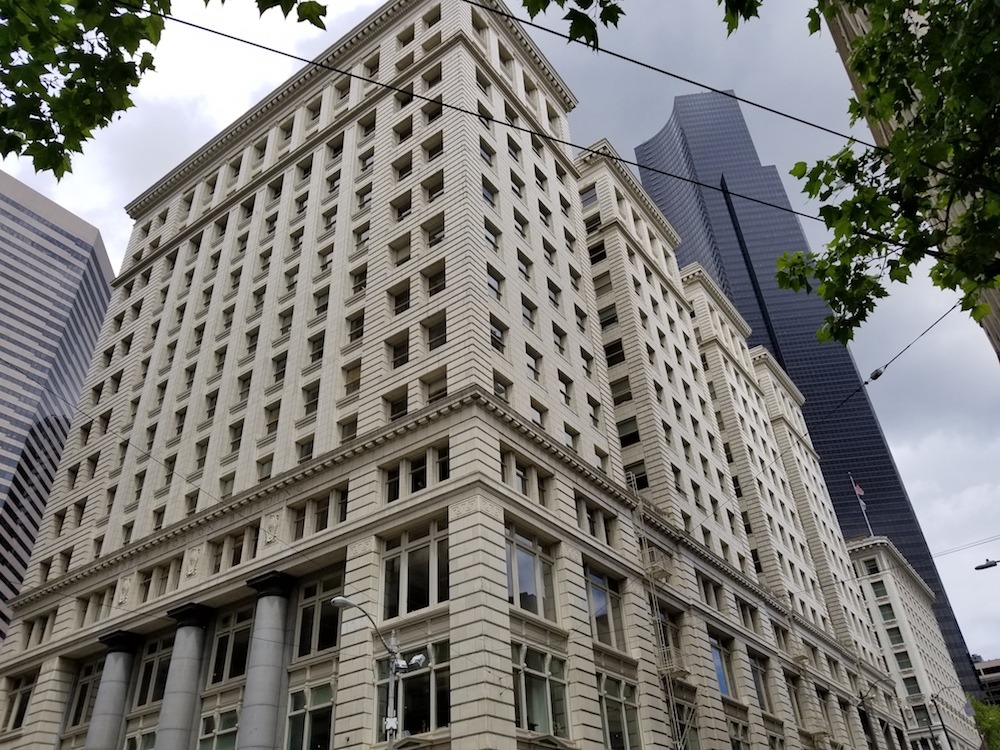 Historic masonry building illustrating many horizontal facing surfaces. Photo by Amy Woods.
Historic masonry building illustrating many horizontal facing surfaces. Photo by Amy Woods.
Historic Masonry Materials
Historic masonry materials primarily refer to brick, terra cotta, stone, concrete block, cast stone, and secondarily, mortar. In a typical masonry wall assembly, mortar might comprise 20 to 25 percent of the masonry wall system. Masonry materials are good in compression, and generally poor in tension unless reinforced. Their strength and porosity vary for each type of material as well as within each type. It is important to understandthe common characteristics specific to eachmasonry material such as strength, porosity/ density, water absorption, composition, type and gradation of aggregates, and cementitious material used, when developing treatments.
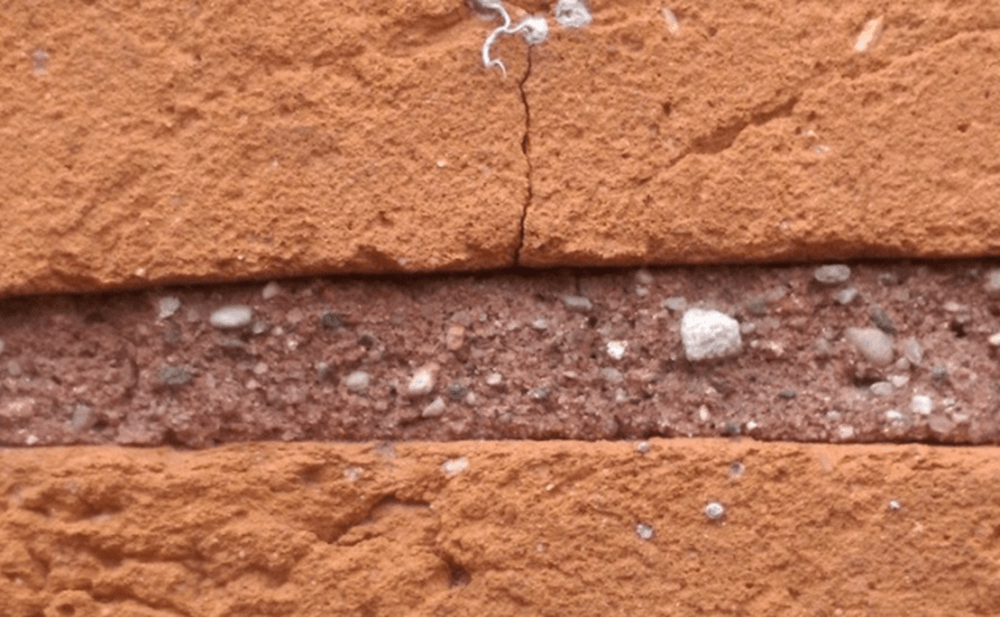 Figure 2: Historic brick mortar with lime inclusions and coarsely graded sand. Photo by Roy Ingraffia
Figure 2: Historic brick mortar with lime inclusions and coarsely graded sand. Photo by Roy Ingraffia
Masonry Wall Systems
Exterior masonry wall systems have evolved through centuries of experimentation and more recently by way of a rapidly changing construction industry. Historic systems primarily fall within the following categories: mass, transitional, curtain/ barrier, and cavity. Additional elements that are integrated with these masonry wall systems include, but are not limited to, metal ties, iron and steel anchors, steel lintels, steel structural elements, flashings, and sealants. Each wall system has different elements that contribute to how the wall moves, manages water, and holistically functions with the various types of masonry materials. Descriptions are included below for the primary historic masonry wall systems and how they manage water illustrated.
Exterior masonry wall systems have evolved through centuries of experimentation and more recently by way of a rapidly changing construction industry. Historic systems primarily fall within the following categories: mass, transitional, curtain/barrier, and cavity. Additional elements that are integrated with these masonry wall systems include, but are not limited to, metal ties, iron and steel anchors, steel lintels, steel structural elements, flashings, and sealants. Each wall system has different elements that contribute to how the wall moves, manages water, and holistically functions with the various types of masonry materials (Figure 3). Descriptions are included below for the primary historic masonry wall systems.
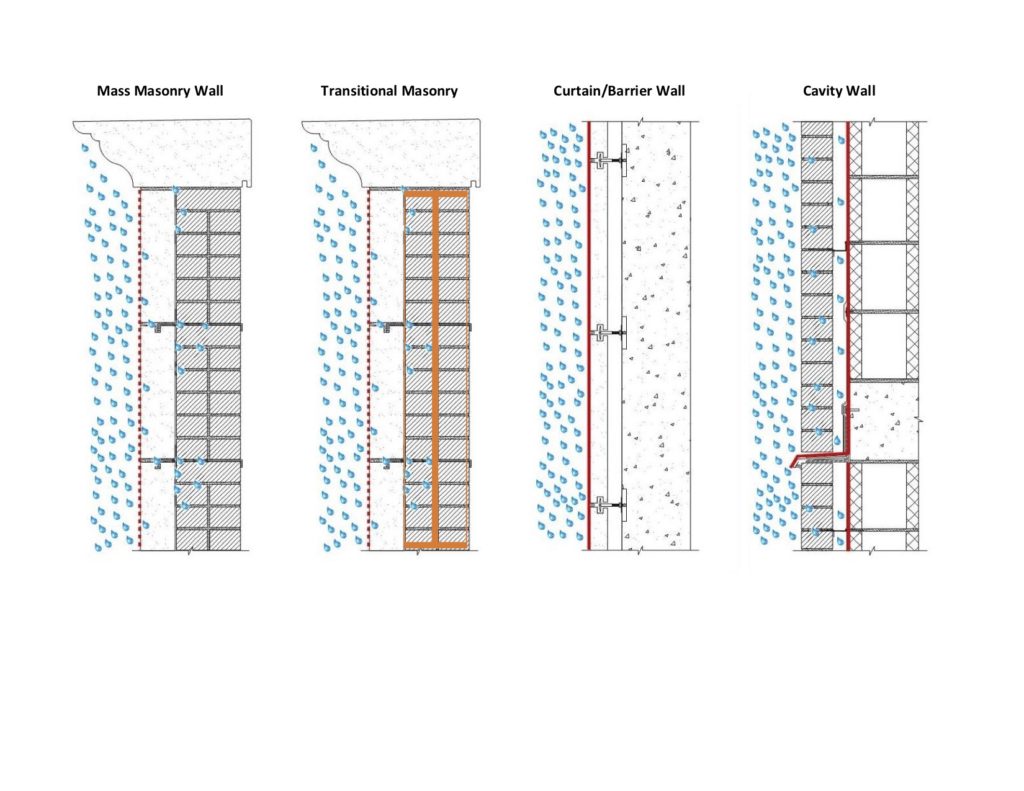 Figure 3: Masonry wall systems illustrating how they manage water. Image created by Amy Woods.
Figure 3: Masonry wall systems illustrating how they manage water. Image created by Amy Woods.
Mass
Mass masonry wall systems are the oldest typology, are based on empirical design, and have a track record of lasting thousands of years. Masonry materials used in these systems are typically stone and brick but can also include ornamental terra cotta or cast stone. Mass walls are load bearing and act as the main structure of the building. Floors, roofs, and interior columns can be wood timber, steel, or stone and brick masonry.
There are many examples in the world dating back thousands of years up through the 20th Century that were constructed of thick stone masonry, the Parthenon in Athens, Greece being one of them. In the 19th and 20th centuries, with the desire to build taller, smaller stone and brick units were combined and tied together to push the envelope of mass wall construction. The tallest example is the 16-story Monadnock Building in Chicago, Illinois by Daniel Burnham and John Wellborn Root, constructed in 1891, with a base wall thickness of 6 feet.
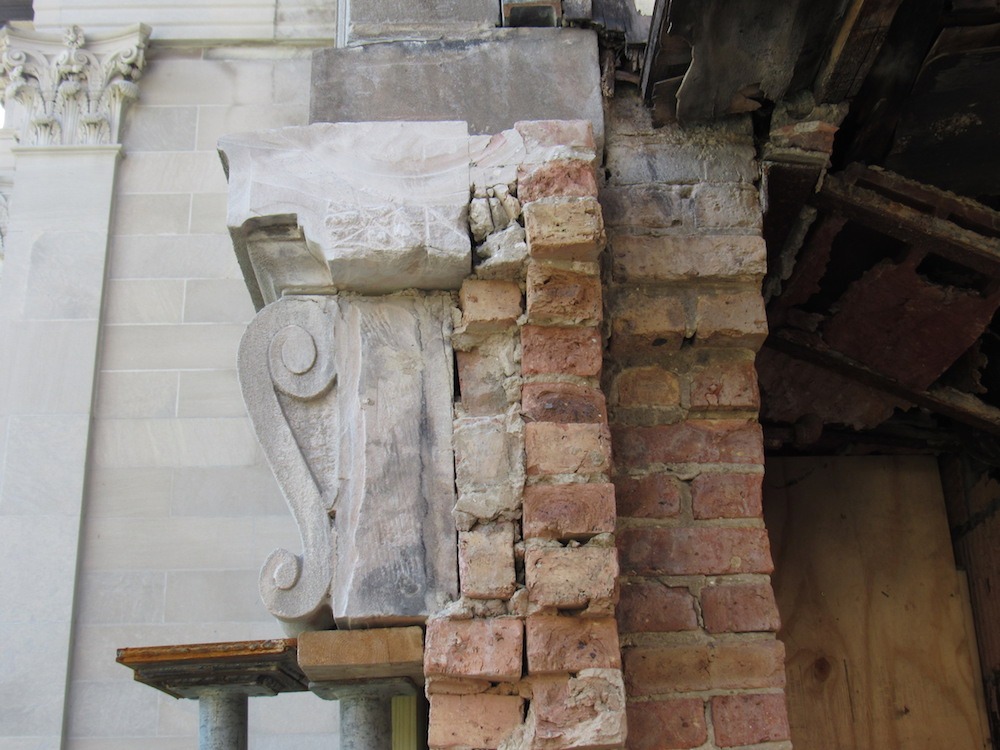 Figure 4: Mass masonry close-up example. Photo courtesy of Amy Woods.
Figure 4: Mass masonry close-up example. Photo courtesy of Amy Woods.
Mass masonry exterior walls tend to move as aunified element. For thissystem to effectively manage water, the exterior facade must be maintained so that bulk water does not enter. The thickness of the mass walls allows for some residual water and moisture to enter the wall and dry out naturally. It also requires vapor transmission and breathability of the wall from both sides.
Transitional
Transitional masonry wall assemblies represent a period of construction between the 1890s and World War II, in which the building industry was “transitioning” from mass walls to steel skeleton frame construction. As the desire to construct taller buildings increased, and the use of elevators were introduced, mass walls became an ineffective building strategy. The thickness of the mass wall necessary to carry load reduced the space allowable for window openings and therefore, light and ventilation. These walls also reduced sizeable usable interior space, especially at the base of buildings. To provide adequatestructure as well as increase floor plan spaceand window openings, steel became the popular solution. Transitional masonry wall systems are a hybrid of masonry and steel but are not considered curtain or barrier wall systems.
Integrating steel within mass masonry buildings started by using elements of steel to support various loads. This later transitioned into using a full steel structure with masonry clad on the exterior. Masonry materials and steel behave differently and have different material properties, including coefficient of thermal movement. Though mass masonry walls move somewhat uniformly, the addition of steel creates differential movement. However, since steel was a relatively new material at this period, and its long-term performance was not fully understood, movement joints and isolation membranes were not commonly included in transitional masonry construction.
Mass masonry and transitional masonry wall systems are typically defined by their structure rather than their thermal/moisture management functionality. Both building types were often designed with passive ventilation systems, which aided in the wetting and drying capacity of the wall. Mass masonry manages water through drying via both interior and exterior surfaces. Transitional walls typically have less masonry with the addition of steel, which limits the mass to one or two wythes of masonry, hence rendering the masonry less robust in managing moisture. Very little consideration was given at the time of construction to adding secondary components to deal with this issue.
Curtain/Barrier
Curtain wall systems, also referred to as barrier wall systems, utilize masonry as an exterior cladding system only. The main building structure is often steel or concrete. Masonry cladding is tied to the structure and uses shelf angles and ties for the gravity and lateral loads of the masonry units. This is a common type of construction for buildings that are clad with terra cotta and dimensional (thin) stone veneers.
Similar to transitional masonry wall systems, curtain/barrier walls also typically had little to no accommodation for movement of different materials and did not include movement joints or isolation materials between masonry and steel. Additionally, there was no internal system for managing water. The design of these systems often wrongly assumed that the exterior facade acts as a barrier, preventing water from penetrating the wall system. In reality, if waterinfiltrates the exterior surface, there is no way toweep it out of the wall system.
Cavity
Masonry cavity walls evolved from the understanding that some residual water will likely penetrate the masonry cladding system. This typology is designed to manage water between the exterior masonry cladding and the main structure. The main structure can be steel, concrete, or concrete masonry unit (CMU) withan infill backup material such as concrete orCMU. Lateral ties and shelf angles are used to support the exterior cladding system.
Water is managed by including an air space between the exterior masonry cladding and main structure along with flashing elements to help dispel water. Older flashing systems included materials such as copper, building papers, and bituminous products. Modern flashing systems can include sloped stainless-steel sheet metal, drip edges, self-adhered membranes, formed end dams, mechanically fastened termination bars, and weep holes.
Condition Assessment
Conducting a complete building condition assessment is critical for determining the cause of problems and the extent of damage. This approach also helps in understanding the original design/function of the building versus how it might be used in the future based on new programming needs. Assessments include background research, investigation, testing, and developing treatment options.
Background
Background information such as construction, repair, and maintenance history of a building provides critical context for the conditions observed. Original drawings can be helpful but are not always available. Repair and maintenance records are useful in outlining what materials have been used previously, as well as where problems continue to occur. Another way to gain valuable information is to interview maintenance staff and building managers. The more information you can gather about the building, the more beneficial it will be to the project moving forward.
Investigation
The investigation of a building allows for a holistic approach in diagnosing any issues, which begins with a walk around the building and roof areas. Elevation drawings should be used or developed to document visual observations throughout the facades and roofs. The most vulnerable locations on a building are horizontal surfaces such as parapets and window sills, projections such as cornices and belt courses, and any other skyward facing surfaces. If damage or breaches are found on horizontal surfaces, it is certain that water hasor will directly infiltrate into the wall system.Corners are also susceptible areas of a building due to the lack of movement joints and higher stress concentrations.
It is imperative to look close-up at the horizontal surfaces and identify locations on each representative area of the facades. Close-up observations should be conducted in combination with sounding of the surface for any hidden defects or delaminations. The tool used for sounding will depend on the masonry material (e.g. rubber mallet for terra cotta or metal hammer for hard stone). Additional poking and prodding tools may also be needed to evaluate the materials.
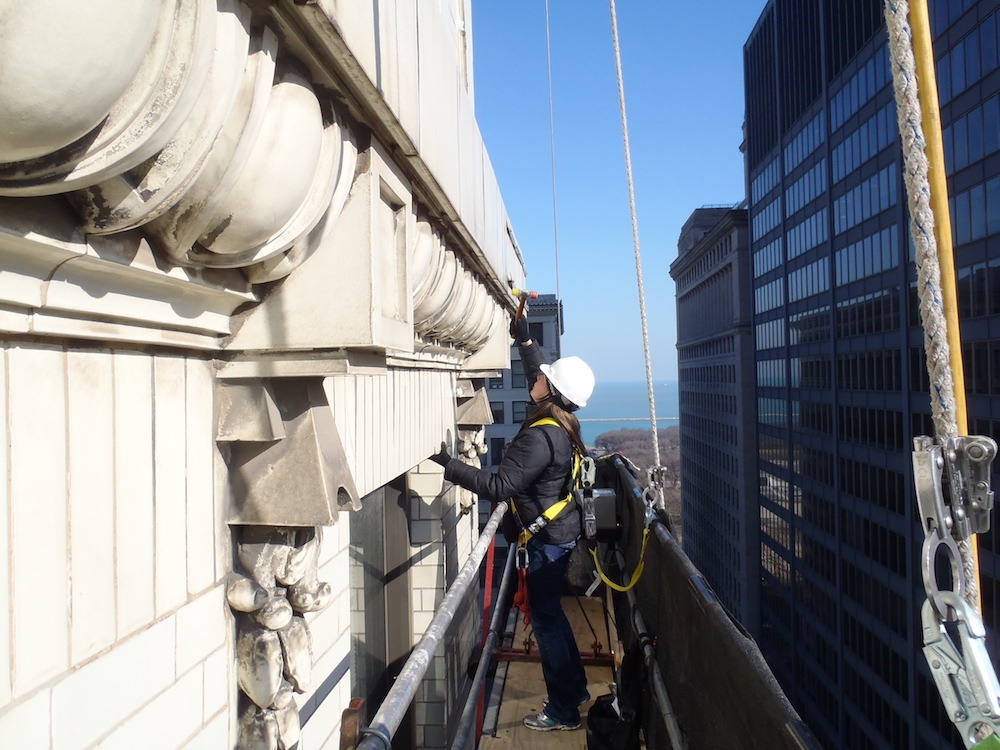 Figure 5: Sounding terra cotta during investigation.
Figure 5: Sounding terra cotta during investigation.
An investigation should also include exploratory openings to limit unwanted surprises during the restoration work. Openings are typically done with a qualified masonry restoration contractor where removal of the exterior materials is done carefully. Openings allow the engineer or architect conducting the assessment to document the construction and material details and compare them to any drawings or previous assumptions.
Testing
Both field and laboratory testing may be neededto fully understand the root cause of deteriorationor water infiltration of the facades. Field testingmay be non-destructive or destructive. Non-de- structive evaluation (NDE) using various types of equipment is often helpful in determining location and size of anchors or reinforcing. Invasive in situtesting can include flat-jack testing of brick, watertesting, or adhesion testing.
Where additional information about the masonry materials is needed, samples should be removed in discrete but representative locations. Laboratory testing may include compression, tension, flexural, absorption, porosity/density, bond, and vapor transmission. Samples can also be reviewed microscopically and petrographically to evaluate the composition and components that comprise the material. These steps are often critical for both the existing materials and new materials to be used, including the masonry materials and their associated mortars.
Treatment Options
Information collected and documented during the background research, field investigation, and testing provides valuable information in understanding the building, how it functions, and the areas and materials that should be addressed to solve the root problem. Treatment options selected will affect the way in which the masonry wall will perform. Project budgets and schedules can sometimes restrict ideal repair options. Therefore, taking the time to outline the damage and the various treatment options is helpful to the project team and owner in making informed decisions. Prematurely developing repair and restoration treatment options without conducting a comprehensive condition assessment may lead to repairs that fail due to a problem that has not been resolved, such aswater infiltration.
Common Deterioration
Masonry materials are typically strong in compression, however can be susceptible to tensile stresses, therefore the damage that is commonly observed is cracking, spalling (a hand- sized chunk of material missing), or scaling (thin outer surface missing). Some common deterioration tendencies are listed herein.
Water infiltration is the most common source of deterioration especially in the case of mass, transitional, and curtain/barrier wall systems that were not designed with water management systems or accommodation of movement. Water leads to freezing and expansion of ice within the masonry, corrosion of internal steel, and the expansion of rust product. Where steel sits on or adjacent to masonry, differential thermal expansion/contraction also occurs and was not historically accounted for in early designs. Cracking, spalling, and scaling of the masonry opens the facade for additional water infiltration, exacerbating the damage cycle.
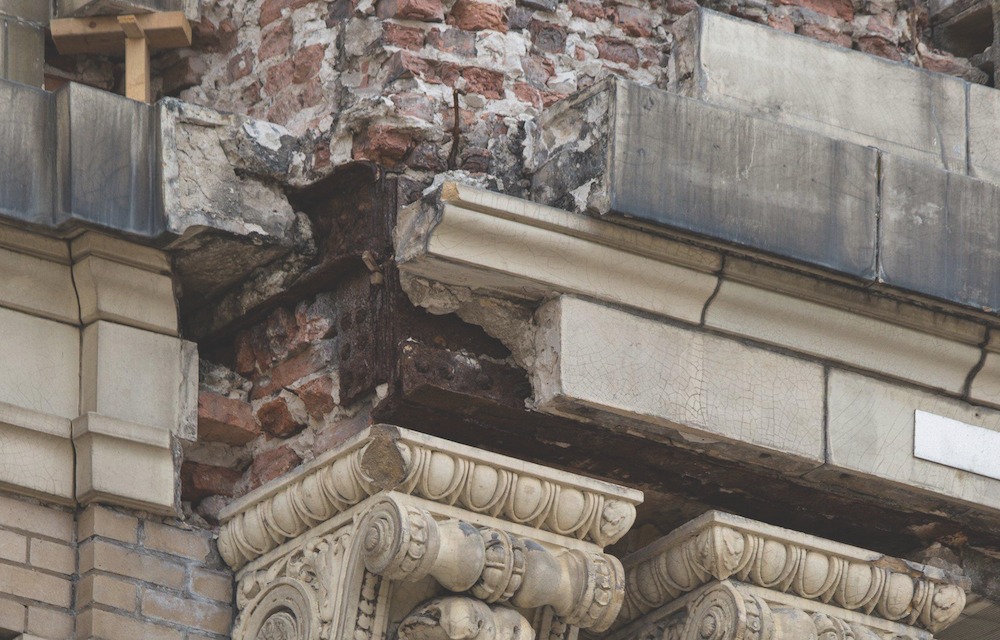 Figure 6: Transitional masonry with corroded steel. Photo courtesy of Eric J. Nordstrom.
Figure 6: Transitional masonry with corroded steel. Photo courtesy of Eric J. Nordstrom.
Other causes of deterioration can include previous inappropriate treatments that cause cracking and spalling or entrapment of moisture in the materials. A spall repair, replacement material, or pointing mortar that is denser and stronger than the original can damage the adjacent original materials by both trapping moisture and not allowing vapor transmission and differential movement. Similarly, applying a coating or sealer can also change the breathability of the masonry materials and more importantly, the mortar, leading to moisture entrapment and damage to the masonry system.
Because water is more likely to infiltrate on horizontal surfaces than vertical surfaces, areas that are vulnerable to deterioration include parapets, cornices, belt courses, window sills, and balconies. Hidden horizontal surfaces are also more susceptible to holding infiltrated water, including steel lintels, shelf angles, and steel beam flanges. In all cases, water infiltration leads to deterioration and damage of the masonry systems.
Repair and Restoration Options
Once a condition assessment is complete, the masonry system and materials are known, any needed temporary stabilization has been installed for imminent hazards, and the project goalsdefined, options for repair and restoration can be developed. Three main categories for repairs are generally conducted, in this order: horizontal surface protection, masonry system repairs, and masonry and mortar material repairs.
Protect Horizontal Surfaces
Assuming the roof and its details have been evaluated and are watertight, the first and most important repair should be to protect the horizontal surfaces of the facade, including parapets, cornices, belt courses, balconies, window sills, and any other projections. There are several options that vary in cost and durability. One or more of the following treatments may be appropriate for the project:
- Sealant installed with backer rod to prepared, clean, and primed substrates of the horizontal facing mortar joints. The sealant can be wrapped down the face of the vertical joint a small amount depending on the detail. Silicone sealant would be expected to have a useful life of up to 10 years. Since the joint is so critical, it is not recommended to leave it for the full expected warrantee; instead, annual assessments for debonding or breaches should be conducted.
- Silicone sheet installed as added protection over a newly installed sealant joint. Make sure the silicone sheet and silicone joint materials are compatible and bond.
- Lead T-joint cap installed as added protection over a newly installed sealant joint.
- Sheet Metal installed for additional long-term protection. Material options are copper, tin-zinc alloy copper, stainless steel, painted galvanized, and anodized aluminum sheet metal copings/flashings. The new assembly should provide slope, integration with waterproofing membranes, expansion details for the length of the run, an appropriate reglet/transition joint to the vertical leg, and a drip edge. Depending on the material chosen, this solution can last from 40 to 100 years. It is non-reversible, and anchors and membranes will affect the original materials, but these solutions also provide a high level of protection and resiliency to the masonry facade.
- Reinforced Liquid Applied Roof Membrane applied, and is often helpful when there are non-linear conditions, such as cornices with ornamentation and curves. Preparation of the surface, proper installation of the layers and reinforcement, as well as an ultra violet (UV) protecting top coat should be installed per manufacturer’s directions. The top coat can
- be matched to the masonry material. This solution is non-reversible due to the preparation work on the top surface prior to installation of the membrane.
- Reinforced Liquid Applied Roof Membrane applied, and is often helpful when there are non-linear conditions, such as cornices with ornamentation and curves (Figure 7). Preparation of the surface, proper installation of the layers and reinforcement, as well as an ultra violet (UV) protecting top coat should be installed per manufacturer’s directions. The top coat can be matched to the masonry material. This solution is non-reversible due to the preparation work on the top surface prior to installation of the membrane.
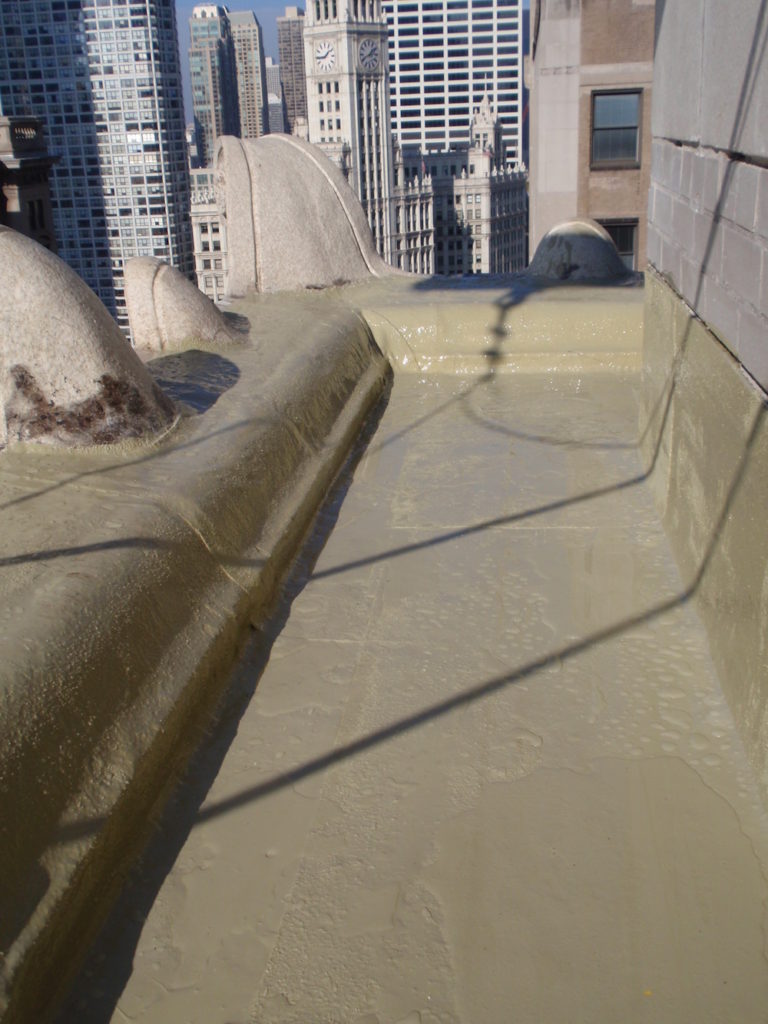 Figure 7: Reinforced liquid applied membrane protecting top of cornice. Photo courtesy of Thornton Tomasetti.
Figure 7: Reinforced liquid applied membrane protecting top of cornice. Photo courtesy of Thornton Tomasetti.
- Through-Wall Sheet Metal installed where details, specifically at coping units, can be removed and reinstalled to install through-wall sheet metal. This is an excellent 50 to 100-year long-term solution that is less visible. Most commonly, stainless steel or copper is used, which is integrated with waterproofing membranes, expansion details, and drip edges (Figure 8). Anchors for the coping units will need to be integrated with this solution to make sure that penetrations are detailed to be watertight. This does not necessarily mean just sealant, but a solution that has been installed as a mockup and water tested to confirm the solution will not leak. After the coping units are reinstalled, one of the joint sealant details should also be installed to protect the system.
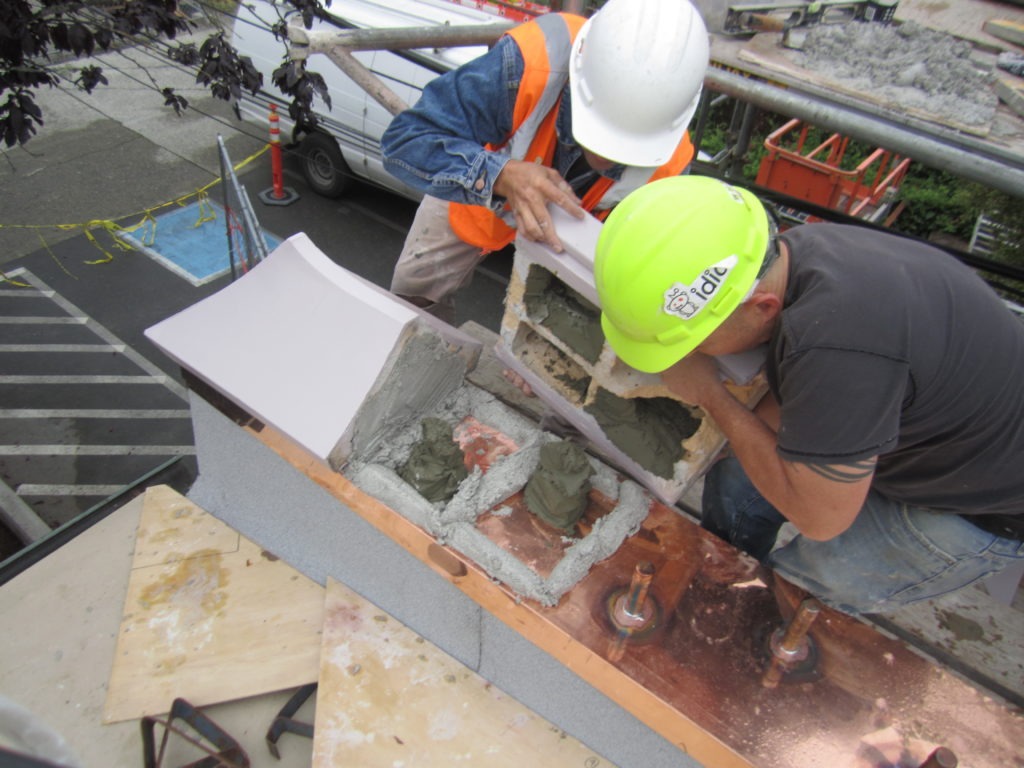 Figure 8: Through-wall copper flashing with anchor protection under coping units. Photo courtesy of SHKS Architects.
Figure 8: Through-wall copper flashing with anchor protection under coping units. Photo courtesy of SHKS Architects.
Masonry System Repairs
The repair of masonry systems includes repairing, replacing, or coating exposed corroded steel elements, integrating new water management flashings, and adding supplemental anchorage. One or more of the following may be needed for the project:
- Corroded Steel – Remove masonry to expose corroded steel elements. Assess the condition of the steel to determine if it needs to be replaced or repaired. To add protection to the steel, clean and coat it with a corrosion inhibiting coating system in accordance with manufacturer’s directions. An alternative
- Water Management Flashings – Remove masonry to expose horizontal steel elements that are contributing to holding water. This is common with transitional masonry building details. Install a new stainless-steel flashing system that includes a mechanically fastened termination bar, slope, end dams, drip edge, and mesh weeps.
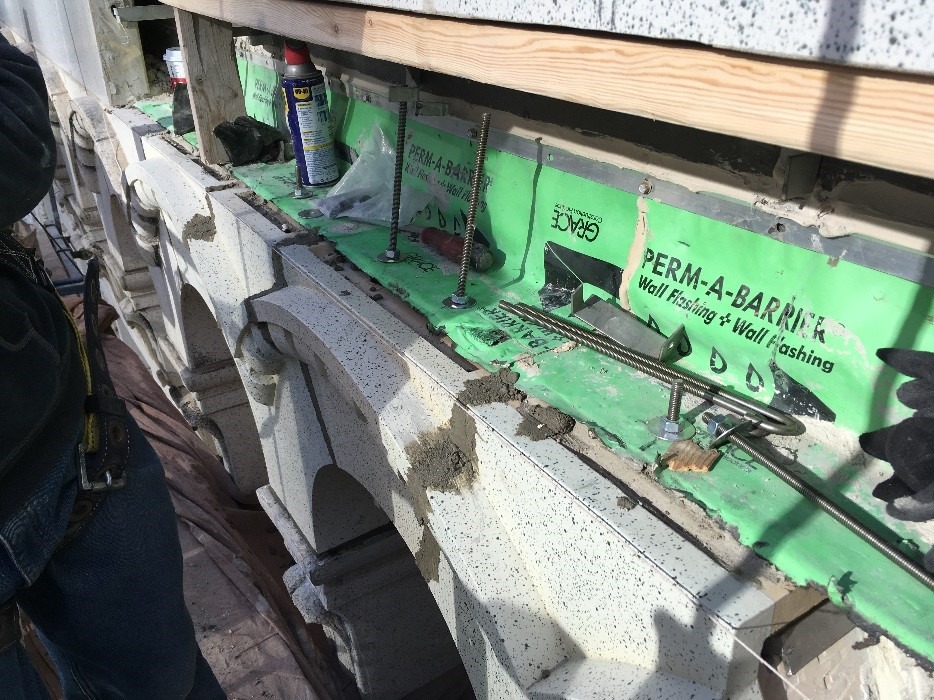 Figure 9: Water management flashing at shelf-angle behind masonry units. Photo courtesy of Wiss, Janney, Elstner Associates.
Figure 9: Water management flashing at shelf-angle behind masonry units. Photo courtesy of Wiss, Janney, Elstner Associates.
- Supplemental Anchorage – Where additional supplemental anchorage is needed for the masonry facade to improve lateral support, there are stainless steel options including helical, expansion, threaded rod set in epoxy, and grout tube. Not all are appropriate for each type of masonry and the selection should be carefully chosen based on material and conditions observed. Mockups and pull testing of the masonry material and the backup system should be conducted to ensure the use of appropriate anchors.
Masonry & Mortar Material Repairs
The two primary methods of repairs include replacing masonry units and/or patching original units with cementitious repair materials. Methoddetermination is based on conditions identified, budget and schedule for the project, and project goals and durability expectations. In either case, the most important criteria is that the new materials match the properties of the existing materials. Important properties to match for masonry materials and mortar are compressive and flexural strength, density, water absorption, and vapor transmission. It is also essential to know the material constituents, such as clay, aggregates, and cementitious components, so the raw materials will either match or have weaker characteristics than the original.
Matching is critical so that the new materials do not cause unexpected future damage. If materials selected are too hard, too dense, have lower vapor transmission, and/or do not let the masonry system function and manage water, damage can occur. New materials should be the sacrificial material, not the original materials.
It should also be noted that new materials are often different from historic materials. Cement and cementitious materials undergo higher kiln temperatures and are typically ground more finely, which can lead to stronger and denser mixtures. This is specifically important for cast stone, concrete block, concrete, and mortars. Be sure to select cementitious materials, which are appropriate and compatible with the masonry units and system you are repairing. This could include various types of lime, portland cement, natural cement, and pozzolans/alternative cementitious materials, or combinations thereof. Similarly, clay-based materials are often processed with a more uniform and dense mixture. Work with the manufacturers to select appropriate materials for each project.
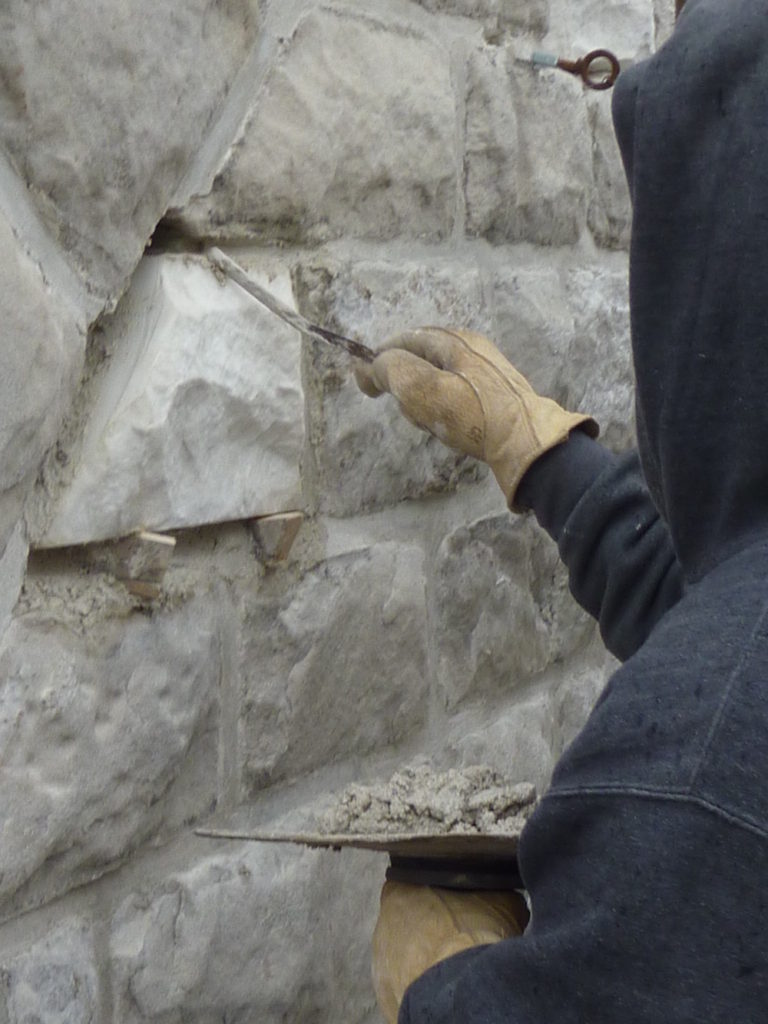 Figure 10: Certified mason installing stone replacement and pointing mortar. Photo by Roy Ingraffia.
Figure 10: Certified mason installing stone replacement and pointing mortar. Photo by Roy Ingraffia.
Qualified Masons
Historic masonry restoration projects are successful when qualified craftworkers are included within the project team. The International Masonry Institute (IMI) offers a six-day HistoricMasonry Preservation Certificate (HMPC) course for journey-level masonry restoration contractors with the International Union of Bricklayers and Allied Craftworkers. The program was developed to provide a higher-level of knowledge and understanding to union masonry contractors who work on historic properties. The comprehensive curriculum covers both classroom and hands-on exercises to develop and refine masonry restoration expertise. IMI offers qualification language that architects and engineers can include in their specifications to ensure the masonry craftworkers performing work on their projects are skilled, qualified, and successfully completed the certificate program. For more information on HMPC and IMI certificate programs, including sample specification language, visit IMIweb.org/training.
Conclusion
Historic masonry buildings are durable and longstanding; restoring, repairing, rehabilitating, and maintaining these facades is important to preserving our communities’ and our nation’s historic fabric. Projects should include a holistic document review and condition assessment to understand the type of masonry wall system, the masonry and mortar materials, and the conditions of the facade elements and materials. Often, there are unknown factors in a restoration project, however, by entering a project with as much information as possible, a restoration plan with treatment options can be strategically developed. After safety concerns are remediated, the highest priority should be protecting the horizontal facing surfaces. Other system repairs should then be addressed with the steel, anchorage, and water management. Masonry repair materials should be compatible with the existing masonry materials in properties and composition. The final step is making sure qualified restoration masons are part of the successful project team and implementing the well-developed restoration plan.
Resources
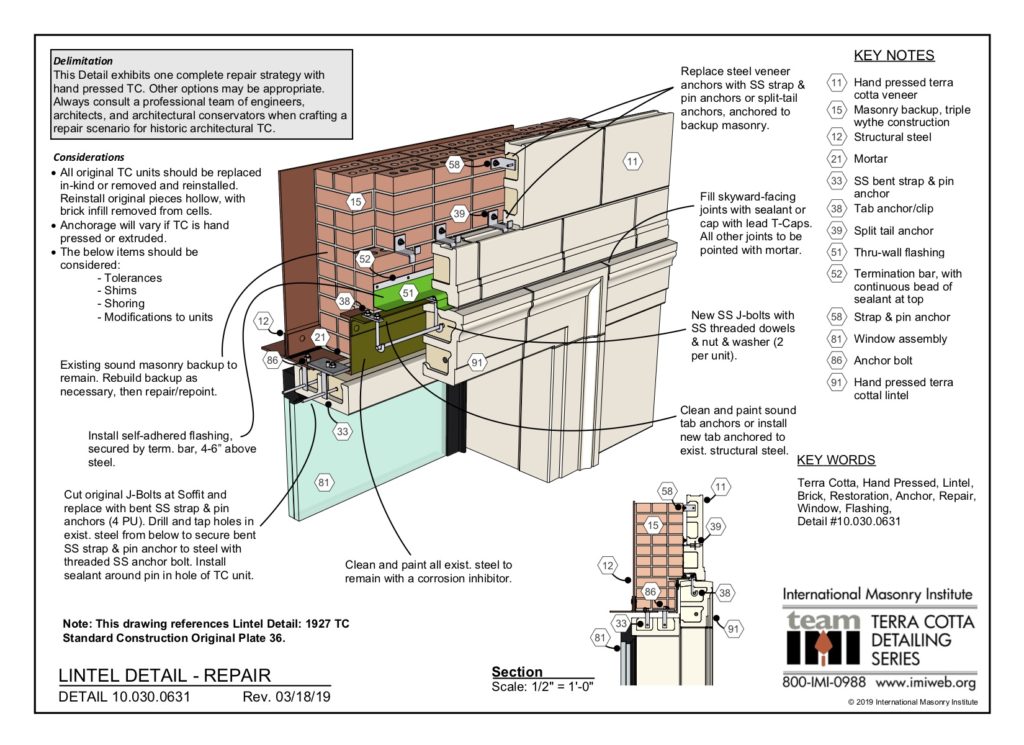 Figure 11: IMI terra cotta replacement installation detail sheet.
Figure 11: IMI terra cotta replacement installation detail sheet.
IMI provides training, education, and resources that focus on creating high-quality restoration projects. In addition to IMI’s HMPC program, IMIcontinues to update its historic masonry detail library, such as terra cotta replacement installation, to provide architects and engineers with resources as they develop project details. For more information, visit IMIweb.org/restoration, or contact an IMI Director in your region.